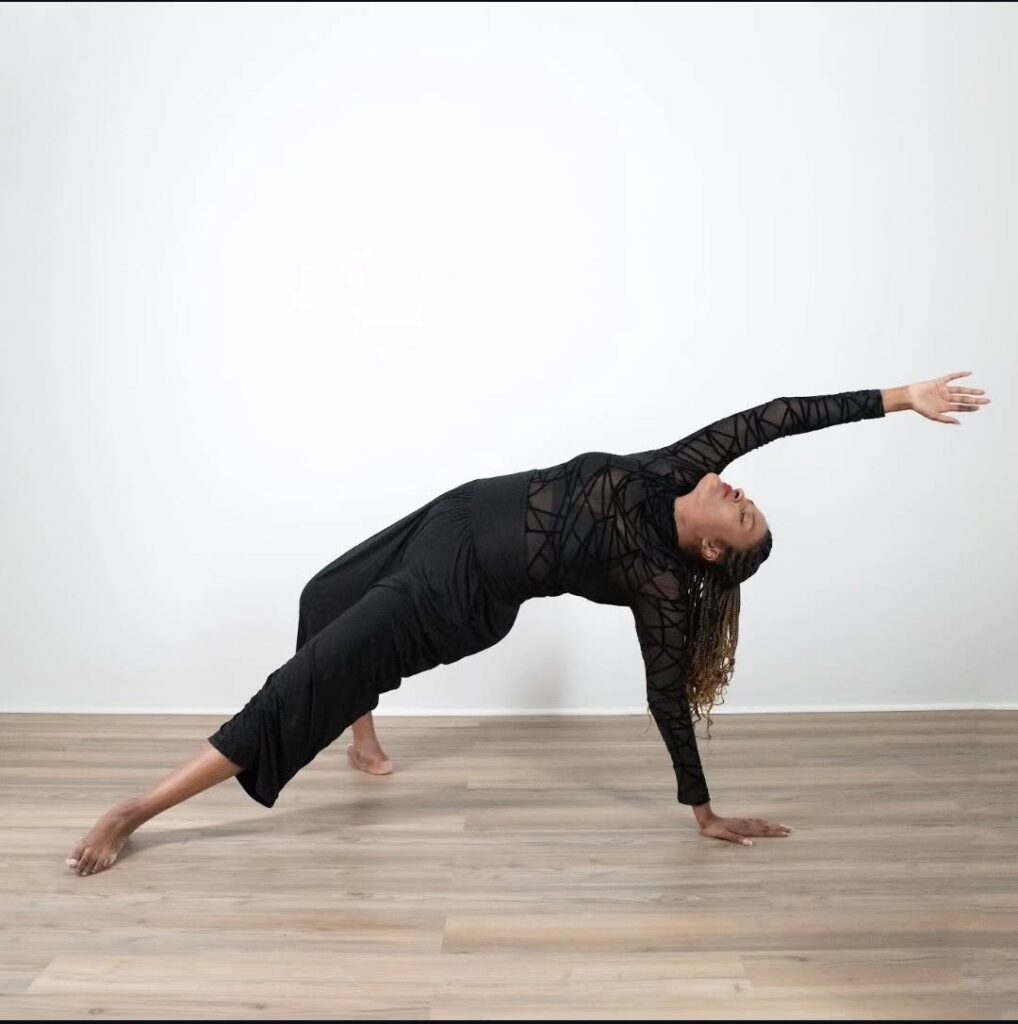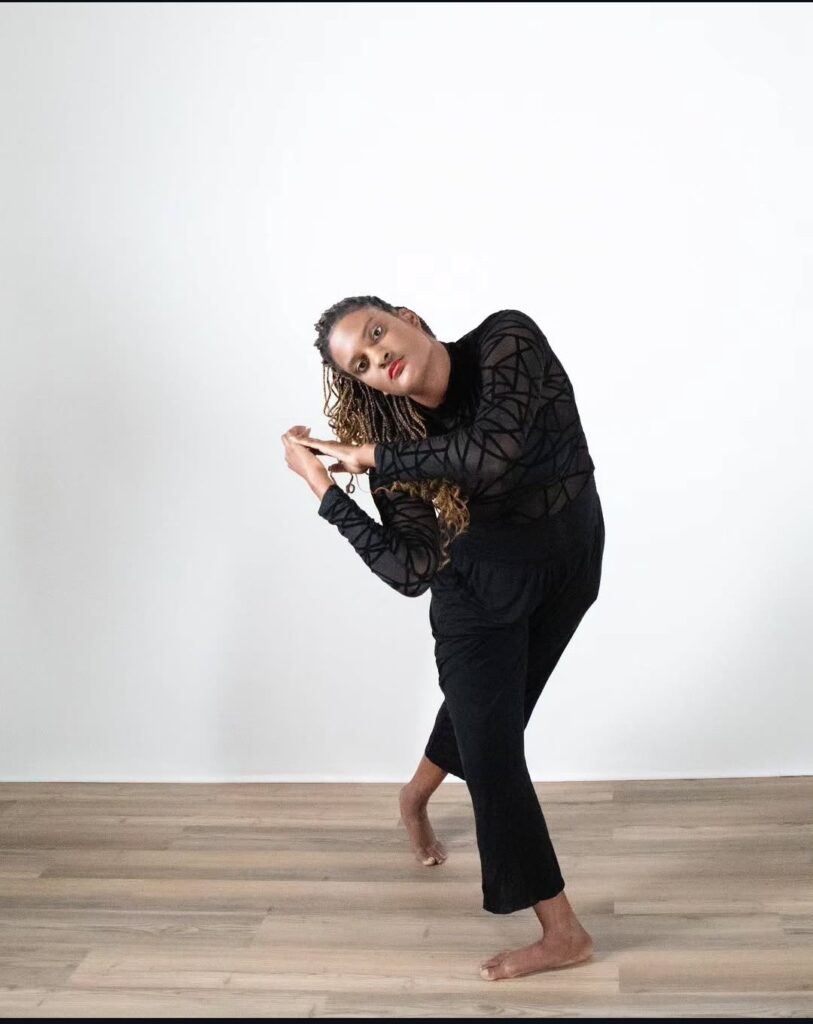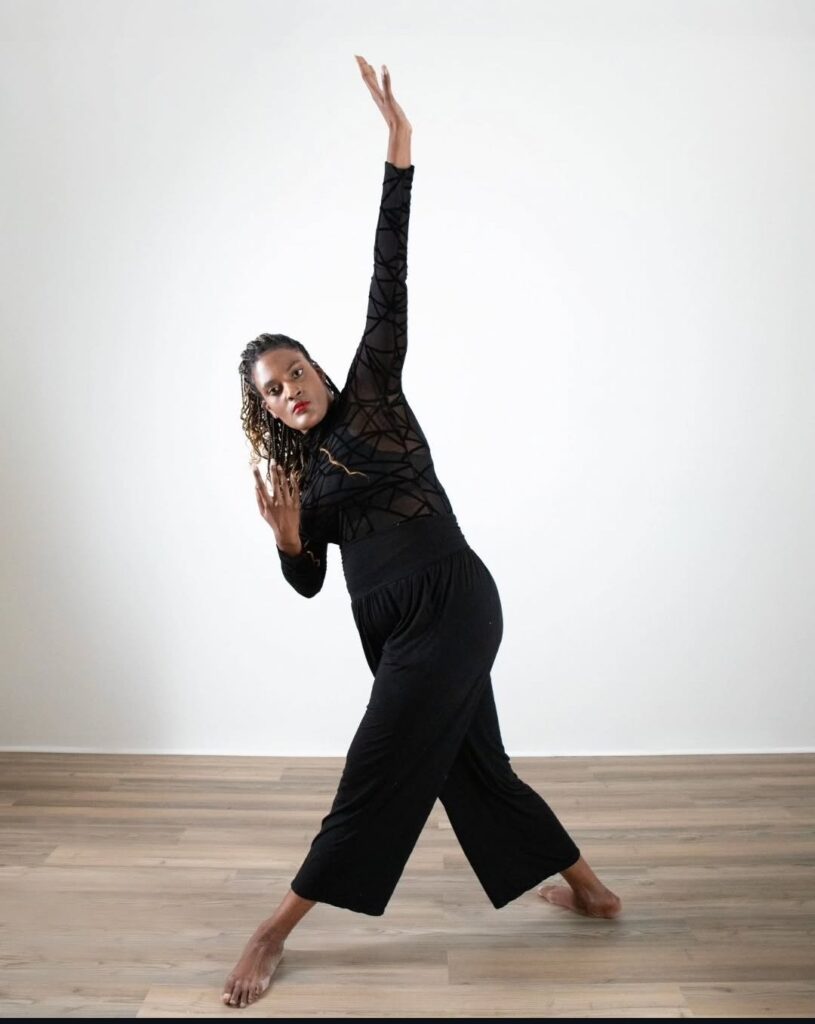The Power of Being Seen
November 3, 2025
Why Access Matters in Dance
BY DEVIN HILL
Photos by Amber Andrews, andrewsartistry.com
Note: This article was published in Stance on Dance’s Fall/Winter 2025 print issue. To learn more, visit stanceondance.com/print-publication.
“You’re just not good enough.”
“Dance isn’t for blind people.”
“You’re such an inspiration.”
“You have to prove yourself.”
These words echoed through my childhood like a scratched record, skipping in my head as I tucked pink bows into my ballet shoes. I never quite understood how they became so deeply rooted in my self-esteem—but they did.
I’ve always been “the different one,” fighting to be seen and taken seriously. But I’m not different. I’m disabled.
My name is Devin Hill. I’m a blind professional dancer, teacher, choreographer, and accessibility advocate. I’ve spent years traveling the US, honing my craft, and building relationships with both disabled and non-disabled communities. I never planned to become an advocate. It happened because I kept finding myself in spaces that weren’t built with me in mind.

Where It All Began
I was born in Dallas, Texas, with a rare eye condition called achromatopsia, which severely impacted my motor skills and delayed my ability to walk. My mother enrolled me in dance not to make me a star, but to help me walk alongside my peers.
For seven years, I lived and breathed dance. But the sting of ableism showed up early: backhanded compliments, lingering stares, dismissive remarks, and an overwhelming sense that I didn’t belong. No one accommodated me. No one even considered it. At 10 years old, I quit dancing entirely.
I told my mother I simply didn’t want to do it anymore. But we both knew the truth. I was trying to survive in a space that was never meant for me.
A Return to Dance – and An Awakening
I didn’t return to dance until my junior year of high school. It was terrifying. I had been away for so long, and my memories of rejection still lingered. But something in me missed it – and hoped it might be different this time.
It was.
My teacher, Shara Barry, saw me. She didn’t know how to teach a blind student – but she didn’t need to. She approached me with curiosity, care, and openness. She gave me the space to figure out what I needed: using sound to spot, tactile corrections, and alternative methods of learning movement. She treated my adaptations not as limitations, but as opportunities to expand how dance could be taught.
For the first time, dance was made accessible for me.
Those two years changed everything. I realized the problem had never been dance – or me. The problem was a system that values perfection over presence, form over freedom. Dance, as it’s taught and institutionalized, is often defined by narrow standards rooted in white supremacy, elitism, and ableism.
I didn’t yet know how to dismantle it. But I knew I wanted to dance.
Becoming the Dancer I Never Saw
When I got to college, I struggled. I didn’t know if dance could really be a career for someone like me. I had no role models. I idolized able-bodied dancers and measured myself against them. I chased perfection.
I showed up early. I never missed a class. I studied rigorously outside the studio and practiced even when I was emotionally drained. I aced every test. I pushed myself to the brink emotionally and physically. And when things weren’t accessible, I blamed myself for not having the energy to ask for help.
I thought perfection would protect me. That if I was “perfect,” no one could deny me a future in dance. But perfection didn’t shield me from ableism. It only deepened the spiral of self-doubt.
Then I met Lesley Snelson, my mentor, and the person who helped me find my voice.
Lesley was the most demanding teacher I’ve ever had, but also the most affirming. She didn’t define me by my disability. She challenged me, encouraged me, and when she didn’t know how to support me, she learned.
Through her, I realized I wasn’t just a student. I was an educator, an artist, and a voice challenging the norm.

From Possibility to Profession
After graduating from junior college, I transferred to the University of Central Oklahoma and declared my major in Dance Performance.
It wasn’t an easy decision. But it marked the beginning of opportunities I once thought impossible: choreographing, working with renowned artists, performing with an award-winning company, and attending the American College Dance Association.
Still, institutional barriers remained. Higher education isn’t built to support true access. Dancers are pressured to return from injuries, attend class while sick, or stay silent to avoid penalties. I often wondered how many dancers – disabled or not – could have thrived if their needs had been honored.
Finding My Place in the Dance World
After college, I moved back to Texas and began auditioning, applying for jobs, and trying to launch my career. On paper, everything looked promising. But the reality was brutal.
I often made it to the final round of auditions – until I disclosed my disability. Then came the rejections.
According to US data, 26 percent of job applications that disclose a disability are rejected. Still, it didn’t dull the pain.
I was told my disability was dangerous. That parents wouldn’t understand. That I was too much of a risk. I became exhausted, hopeless, and seriously considered leaving dance for good.
In a final effort to reconnect with what I loved, I attended my first dance convention at age 25. That’s where I met Cat Cogliandro.
I expected the space to be inaccessible. It was. But what I didn’t expect was to be embraced fully and without reservation. I wasn’t scolded for dancing “messy.” I wasn’t ignored. I was allowed to exist.
After just one hour of dancing, I stood frozen in Cat’s arms, sobbing. Years of sadness, rejection, and grief poured out of me. And something shifted.
I realized I still belonged in dance. I had a purpose beyond technique. I had a mission.
Advocacy Through Art
In the years that followed, I deepened my relationship with Cat as both a mentor and friend. I learned how they navigated visibility and activism in a system that creates little room for either.
Instead of shying away from the dance world’s systemic inequities, I leaned in.
In 2019, I moved to Washington, DC. I began performing professionally, teaching full time, choreographing, and consulting on accessibility.
But one piece was still missing: my voice.
So, at the height of the COVID-19 pandemic, I picked up a camera and began sharing my story to teach educators how to make their spaces accessible. I spoke on topics like audio description, ableist language, and decolonizing internalized ableism.
In just a few months, I became an accessibility education specialist, speaking to national dance conventions and training educators across the country.

What It Meant to Be Seen
Dance wasn’t a luxury in my early years. It was a necessity. It bridged the gap between physical therapy and creative self-expression. As a child learning to walk, dance was the therapy that made movement possible. While others saw pliés and pirouettes as performances, I saw them as milestones, each step a move toward independence. But that context was never understood by those around me. My efforts were met not with empathy or support, but either dismissed outright or exaggerated into inspiration porn. That duality – being invisible and yet overly visible – haunted me from the start.
The absence of representation in dance doesn’t just limit one’s aspirations – it shapes one’s sense of identity. I had no blueprint for becoming a legally blind professional dancer. There were no posters, no performances, no teachers whose bodies or experiences reflected mine. So, I believed I had to erase parts of myself to belong. I straightened my posture, dulled my instincts, and tried to mimic the dancers I saw on stage, even though their tools and mine were fundamentally different. That disconnect almost cost me my love for dance.
Speaking out brought its own challenges. I often feared people would see me as too radical or critical, that I’d be shut out of the very industry I wanted to improve. But I came to understand that silence is a privilege I don’t have. Each time I shared my story, someone – disabled or not – reached out to say they finally felt seen. That was the confirmation I needed to keep going. Accessibility isn’t just for disabled people. It benefits everyone.
Why Access Matters
Now I am exactly where I’m meant to be. Whether I’m empowering my disabled students, consulting with organizations, training able-bodied educators, collaborating with other disabled artists, or posting videos on social media, I’ve found my purpose.
Accessibility is not an option. It’s a necessity.
If we want a dance world that is safe, equitable, and truly inclusive, we must confront and deconstruct internalized ableism within ourselves, our institutions, and our practices.
We must create spaces that honor individual needs. We must redefine what it means to be a dancer. We must listen, learn, and unlearn.
We cannot be seen until we see ourselves.
This is why access matters.
~~
Follow Devin on Instagram @mydisableddancelife.

Responses
There are no comments at this time.
Be the first to start the discussion by filling out the comment form.